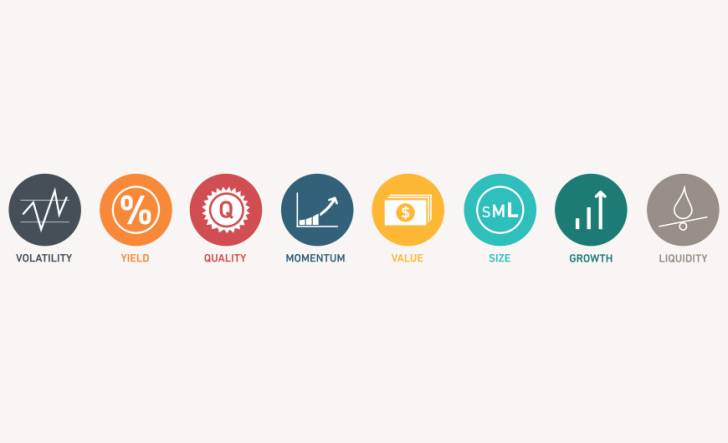by Jeffrey Saut, Chief Investment Strategist, Raymond James
“When you talk, you are only repeating something you already know, but if you listen, you may learn something new.”
. . . Dalai Lama
“He, who knows everything, knows nothing.”
. . . A French philosopher
I am not quite sure how I met Leon Tuey, but meet him I did a few years ago, much to my benefit. My guess it was through either a mutual friend or a Canadian reporter that we both speak to. Whatever the reason, I do not find too many people that have been in the business as long, and have studied it more than I, but Leon is certainly one of them. To wit, Leon Tuey spent decades tracking the markets in Toronto for BMO Nesbitt Burns and RBC Capital Markets before forming his own Vancouver-based independent advisory firm in the late 1980s. As the winter months settle in Leon sojourns to his home in Rancho Mirage, which is where I first spoke with him. In that exchange he told me, “I do absolutely nothing here. I watch the stock market all day long, just as I do at home in Vancouver. I get absolute peace and quiet here. A lot of people say, ‘Aren’t you lonely?’ And I say this is exactly what I seek: solitude, so I can think better.” That statement made me recall this quote from Lin Yutang, “A wise man is never busy. A busy man is never wise.” As The Edmonton Journal’s Gary Lamphier writes:
I learned long ago to pay attention to what Tuey thinks. That’s why I’ve interviewed him dozens of times over the past 25 years, dating back to my days at the now-defunct Financial Times of Canada. Celebrity forecasters like George Soros, Marc Faber and Abby Joseph Cohen get a lot more airtime, but they’re frequently dead wrong (witness Soros’s repeated wrong-headed predictions about a collapse in China). Tuey, now in his 80s, has a habit of being right. But he doesn’t want or need the spotlight, he says. He’s content to make money for his clients, while accepting their thanks for doing so. He has also reached a point in life where he feels free to be brutally honest about the business in which he has worked for well over half a century. And it’s not all laudatory. “We’re not in the gum-flapping business. This isn’t show business. The proof in the pudding at the end of the day is, show me the money,” he says. “Market forecasting is not rocket science. The key is understanding cause and effect relationships. And the key to that is understanding the central bank’s mandate, and the impact of monetary policy on the economy and the stock market. That’s absolutely essential. If you don’t know that, you start babbling nonsense.”
Since meeting him, Leon and I have exchanged many letters, reports, thoughts, conversations, etc. I received this one from him last week:
Hi, Jeffrey,
I calculate a three week moving average of the Bullish sentiment. Currently, it is abnormally low and [that’s] very bullish. Although long retired, many fund managers in Europe, Asia, and North America still call me and seek my view of the market. I can report to you that worldwide, investors are skeptical and fearful. Most are sitting on a mountain of cash. As you know, that is very bullish. My view remains that this great bull market is only in the early stages of the second leg. The first leg was from October 10, 2008 and ended in May, 2015 which was driven by an easy/accommodative monetary policy. The second leg started in February, 2016 which is always the longest and strongest as it is driven by improving economic conditions (due to the monetary stimulation of the past eight years) and accelerating earnings momentum which is what investors are seeing. As you know, since early last year, I’ve been of the view that investors are witnessing the biggest bull market on record and the end is nowhere near in sight. Also, I felt that when this bull market ends, it will be the wildest and wooliest speculative “blow-off” in history. There has never been so much liquidity created as in this cycle. Also, in my 55 years in this business, from a chart standpoint, I have never seen so many humongous bottoms in so many different industries as in this cycle. Many are 15 years and longer. In the 50s, it was mostly in anything electric/electronic and in the 90s, it was mostly high tech. In this cycle, except for the resource sectors, big bottoms are found everywhere. One of technical prerequisites for a long, sustained bull market is that many stocks must trace and break out of long bases. Putting my money where my mouth is, I own a few of the small and micro caps in the Biotech/Health Care area.
Enjoy!
Leon
If that sounds a lot like Andrew and me it should. It also sounds a lot like my friend Rich Bernstein, the venerable ex-strategist for Merrill Lynch who now hangs his hat at the eponymous firm of Richard Bernstein Advisors. It was years ago, as we were having lunch, I told Rich that I thought this secular bull market had years left to run. He replied, “I think this is going to be the biggest secular bull market of my lifetime!” Obviously, we agree with Leon and Rich regarding the secular bull market and would note the most bullish timeframe starts this fall. The sequence for the recent “bull leg” began when our short/intermediate models flipped positive the week before the presidential election. Regrettably, those same two models, wrong-footedly, called for caution around the end of January looking for a 5% - 10% pullback that never came. Fortunately, they flipped back to positive on April 19th, as chronicled in these reports, suggesting the equity markets were headed for new all-time highs. Last week those new all-time highs were achieved by many indices; and, the ones that didn’t make new highs came very close to doing so. Also within the bookends of the week came yet another Dow Theory “buy signal” as both the Industrials and Transports made new closing highs.
Meanwhile, we are about to celebrate the one-year anniversary of the start of the earnings-driven secular bull market. Recall, the earnings trough came in 2Q16 with earnings improving ever since; and depending on what source you use for 2Q17, earnings are expected to be up 6% to 8%. Moreover, there is a fairly good correlation between the two Purchasing Managers’ Indexes and S&P 500’s corporate revenues. Both of those indices were solid in June, implying that revenue growth should continue its upward trajectory as well.
The call for this week: In his book about Jesse Livermore (the boy plunger) titled, Reminiscences of a Stock Operator (1923), author Edwin Lefevre writes about Mr. Partridge (Old Turkey), who was a particularly good investor. So good that other investors would come up to him and ask, “What should I do?” Old Turkey would contemplate the question, cock his head to one side, and with a fatherly smile state, “You know it’s a bull market!” It was as if he was giving you the most priceless advice there is. On another occasion one investor came up to him and told Old Turkey he should sell his shares in Climax Motors as he had done because the stock market was due for a correction and Old Turkey could then buy his shares back at a cheaper price. Old Turkey replied, “If I sold that stock now, I’d lose my position; and then where would I be? I would not lose my job, but I would lose my position. And when you are as old as I am, and you’ve been through as many booms and panics as I have, you’ll know that to lose your position is something that nobody can afford; not even John D. Rockefeller.”
P.S.: As I said on CNBC this morning, “It’s a bull market you know and any weakness is a BUY!”
*****
Additional information is available on request. This document may not be reprinted without permission.
Raymond James & Associates may make a market in stocks mentioned in this report and may have managed/co-managed a public/follow-on offering of these shares or otherwise provided investment banking services to companies mentioned in this report in the past three years.
RJ&A or its officers, employees, or affiliates may 1) currently own shares, options, rights or warrants and/or 2) execute transactions in the securities mentioned in this report that may or may not be consistent with this report’s conclusions.
The opinions offered by Mr. Saut should be considered a part of your overall decision-making process. For more information about this report – to discuss how this outlook may affect your personal situation and/or to learn how this insight may be incorporated into your investment strategy – please contact your Raymond James Financial Advisor.
All expressions of opinion reflect the judgment of the Equity Research Department of Raymond James & Associates at this time and are subject to change. Information has been obtained from sources considered reliable, but we do not guarantee that the material presented is accurate or that it provides a complete description of the securities, markets or developments mentioned. Other Raymond James departments may have information that is not available to the Equity Research Department about companies mentioned. We may, from time to time, have a position in the securities mentioned and may execute transactions that may not be consistent with this presentation’s conclusions. We may perform investment banking or other services for, or solicit investment banking business from, any company mentioned. Investments mentioned are subject to availability and market conditions. All yields represent past performance and may not be indicative of future results. Raymond James & Associates, Raymond James Financial Services and Raymond James Ltd. are wholly-owned subsidiaries of Raymond James Financial.
International securities involve additional risks such as currency fluctuations, differing financial accounting standards, and possible political and economic instability. These risks are greater in emerging markets.
Investors should consider the investment objectives, risks, and charges and expenses of mutual funds carefully before investing. The prospectus contains this and other information about mutual funds. The prospectus is available from your financial advisor and should be read carefully before investing.
Copyright © Raymond James














